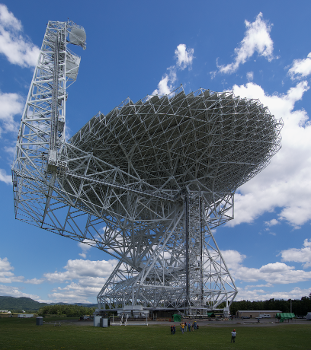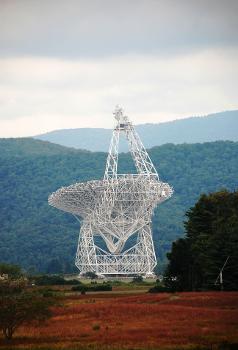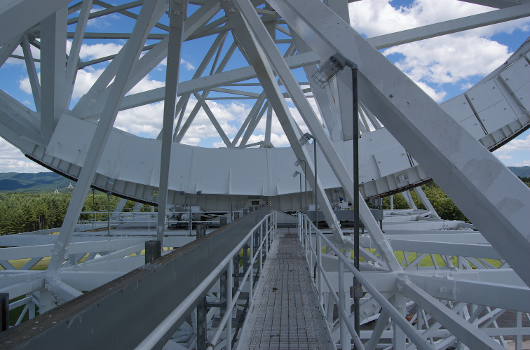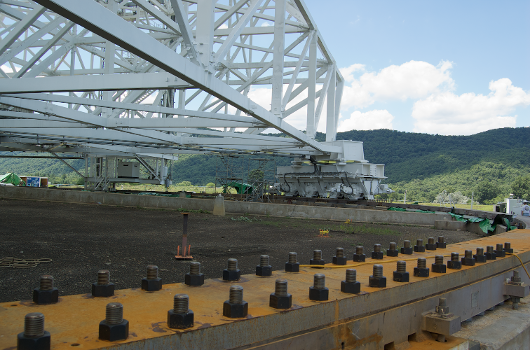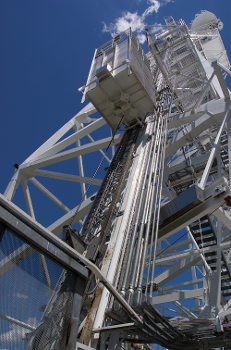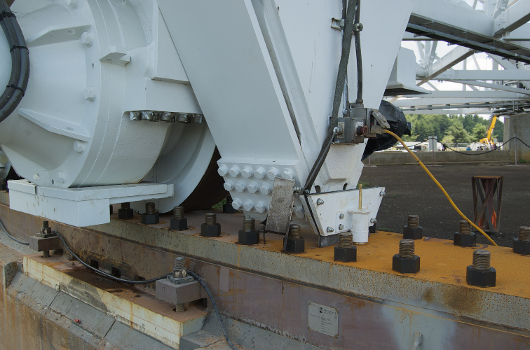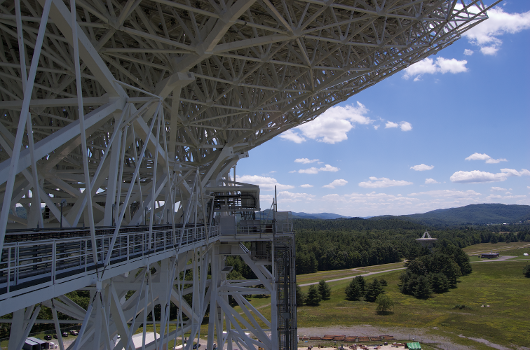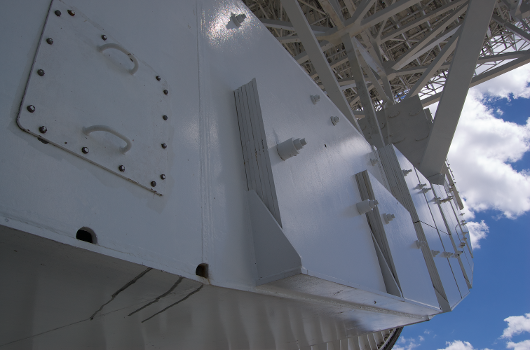General Information
Project Type
| Function / usage: |
Radio telescope |
|---|---|
| Material: |
Steel structure |
Location
| Location: |
Green Bank, Pocahontas County, West Virginia, USA |
|---|---|
| Coordinates: | 38° 25' 57" N 79° 50' 24" W |
Technical Information
Dimensions
| diameter | 100 m |
Materials
| building structure |
steel
|
|---|
Notes
The Green Bank (Radio) Telescope is the largest fully steerable, two axis, Elevation-over-Azimuth radio telescope on earth. It is about 152 meters tall, has an aperture of 100 meters, and weighs about 7600 tonnes. It is an all welded structure that took 10 years to build. A football stadium will fit within the reflector. It operates at frequencies from <1 gHz up to 50 gHz, and to overcome gravitational deformations It has about 2200 active reflector panels in the main reflector that are repositioned at every elevation angle to form a precise parabolic reflector surface. Because it is an offset design, there is no blockage with the viewing aperture. The azimuth axis runs on a steel track 64 meters in diameter, which has been aligned to a flatness of 0.125 millimeters. Each of its 16 wheels support an average weight load of 475 tonnes, and they can withstand a wind and weight load above 700 tonnes. They are tapered as the frustum of a cone and installed at an appropriate angle so that they naturally roll a 64 meter circle. The foundation sits on bedrock and is about 9M high (7.5 meters below ground) and is formed from about 5300 cubic meters of concrete and 400 tonnes of hardened steel.
It is owned and operated by the United States National Radio Astronomy Observatory (NRAO) at the US Radio Quiet Zone in Green Bank, West Virginia. Funding is primarily from the US National Science Foundation. This structure was dedicated in 2000 as the Robert C. Byrd Radio Telescope. This instrument often is teamed with the 305 meter Arecibo Telescope (Arecibo, Puerto Rico) to form a bistatic radar that can penetrate the clouds of Venus. It is detecting previously unknown astronomical objects as far out as 13 billion light years.
Participants
Currently there is no information available about persons or companies having participated in this project.
Relevant Web Sites
- About this
data sheet - Structure-ID
20059915 - Published on:
04/05/2011 - Last updated on:
15/11/2018

